The Kanshudo Blog - older posts
Welcome to the Kanshudo blog! Here you can find older blog posts; the most recent ones are
here.

In the five years since Kanshudo was founded, we have become one of the leading Japanese language learning platforms. Tens of thousands of students study Japanese kanji, words and grammar with Kanshudo, and our platform provides the most sophisticated, comprehensive, and enjoyable approach to learning Japanese available online.
In all that time, we have not increased our prices once! However, our costs have risen dramatically as we have added functionality and users, and the time has come to bring our prices back in line.
Before we do, we are announcing a very special opportunity. We will not be increasing pricing for current Kanshudo Pros. So, if you are already Pro, or you go Pro any time before the end of July, you can 'grandfather' (lock in) our current pricing for as long as you maintain your Pro status!
Lock in current Kanshudo pricing of $30 per year or $3 per month! Go PRO
Our 'beta pricing', $30 for a year or $3 for a month, was set when we were focused exclusively on kanji, before we had a comprehensive grammar library, a custom AI for personalized study plans, a reading library, Challenges and most of our games, or any of the other great features we have introduced over the years. In the meantime, our costs have increased as the complexity of the system and the demand have grown. So, in the next month or two, we will be increasing our prices to bring them back in line with costs, which will be around double the current level.
Lock in current Kanshudo pricing of $30 per year or $3 per month! Go PRO
Our competitors have not held back on price increases - a recent survey showed us that many popular Japanese apps cost over $100 per year, and some cost several times that. Some claim to be free and then charge when you least expect it ... Kanshudo offers more value and functionality than any of them, including completely free access to most features of the site with usage limits, and study coupons that reduce costs greatly. A whole year costs less than a single textbook or classroom lesson could cost!
If you act now, you will maintain the incredible value our current pricing provides - indefinitely.
Note: if you would prefer to go Pro with PayPal, please let us know.
Posted: 2020-06-06,
Tags:
games
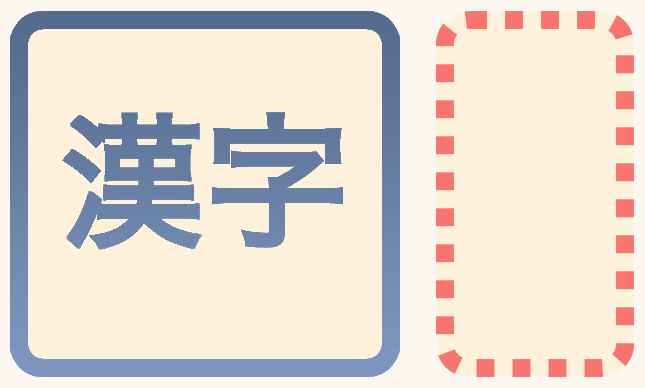
One of the best ways to practice your understanding of Japanese grammar is to actually build sentences yourself. As its name suggests, Kanshudo Sentence Builder lets you do just that!
Sentence Builder has been available as part of lessons and Challenges for a while, but now you can play it whenever you like directly from the PLAY menu.
You can choose the difficulty level of sentences to play with, so you can focus directly on your level. Each sentence you build will automatically affect your grammar mastery for any linked grammar points. You will earn study points for every sentence and every game you complete. Additionally, you can track your high scores!
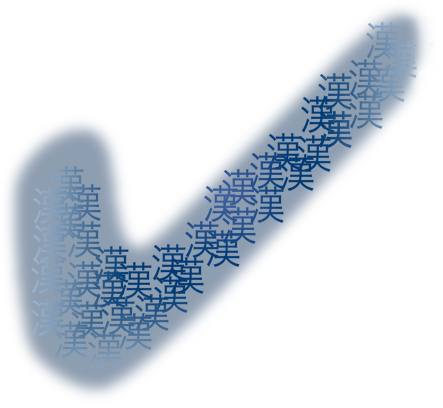
The best way to learn Japanese kanji readings is to learn the most useful words that use them. In the same way, it is easier to learn words when you can tie your knowledge of the word to the kanji used to write it.
We're delighted to introduce several new vocabulary collections which address both of these issues at once, and are ideal for building both your kanji knowledge and vocabulary: the most useful word for every reading of every kanji.
See the new collections [here](/collections/vocab_kanji_useful)
There are 2136 Jōyō kanji, which in total have 4266 official readings (an average of 2 readings per kanji), so the collections present 4266 words. Learning these words is the best way to ensure you know all key readings of each of the 2136 Jōyō kanji, and a great way to learn 4266 of the most useful Japanese words.
Additionally, we include the subset of 3319 words which are 'level-appropriate' - i.e., the words most useful to learn when you first encounter the kanji. (Some readings of kanji are much less common, and not worth learning until you reach a higher level.)
Use these collections to create flashcards, add favorites, test yourself with Quick Test, or play study games!
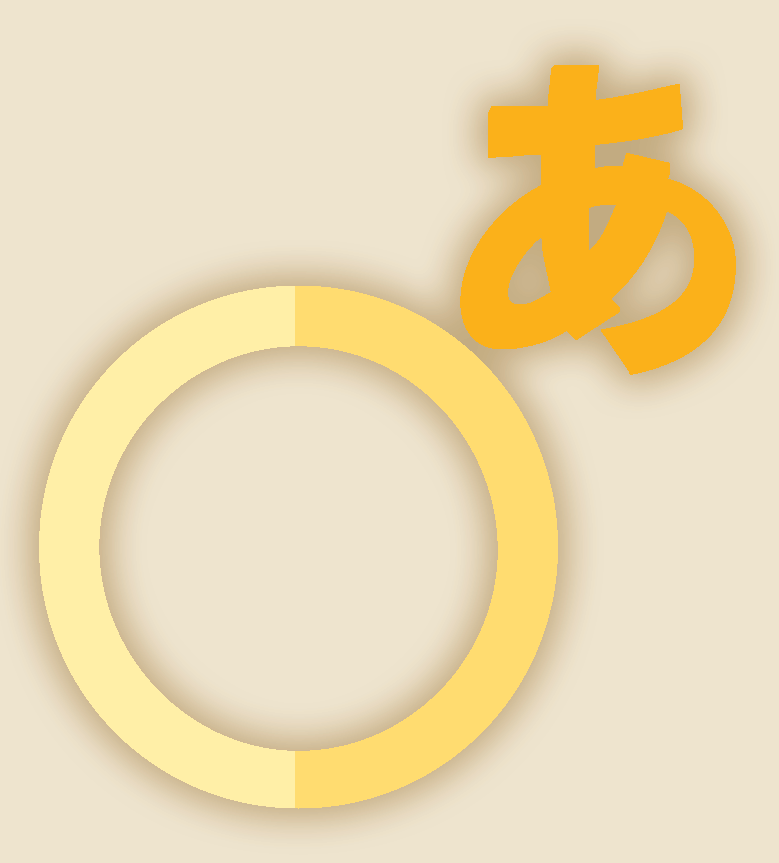
Regular users of Kanshudo will know that clicking any kanji or word in search results will bring up a 'quick view' with key information, enabling you to answer most questions you might have without clicking through to the details view on its own page.
Now, example sentences have something similar: click any word in an example sentence's short form view, and a new section we call 'dynamic details' will load containing all information pertinent to that word: for example, any grammar points that touch on that word, inflections, word details, and details of any kanji it contains.
Additionally, we're delighted to announce a feature that has been requested many times: the ability to toggle furigana for example sentences! You can now click the icon to the left of any example to turn furigana on or off. You can modify your default preference in your Account page.
Let's look at an example (no pun intended!):
First, go ahead and click the furigana icon - notice how the furigana (kana characters that show you how to read/pronounce kanji words) appear / disappear.
Next, click on 言われる: you'll see the 'dynamic details' view appear with details of the inflection being used, the word 言う, and the kanji 言. There's a SEARCH link so you can search for 言われる in Quick Search, and if you want similar information for all words in the example at once, you can click the DETAILS link.
Posted: 2020-04-24,
Tags:
navigation
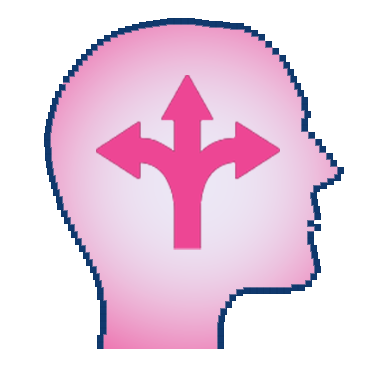
We know ... Kanshudo can be hard to navigate! It is a complex system, and there is a lot to find. We hear you, and we've made some improvements that should make it a little easier! Here's an overview of all the various ways to find things on Kanshudo. If you already know your way around, jump to the Index pages section to see the new guides. If you're just getting started, read on.
Dashboard
First, just a reminder that you can let Kanshudo do the navigating for you: visit your Dashboard any time by clicking the logo in the top left of the screen, and follow the study recommendations. The study recommendation AI is designed to introduce you to all Kanshudo's key functions, which will help you become familiar with the system.
Site search
If you know the name of the feature you're interested in, but you don't know where it is in the menus, you can search for it using Site search. Site search results are included in quick search results, so you can just click the quick search icon at the top right of any page.
Top menu
The top menu provides quick access to Kanshudo's main functions organized by activity:
- Your mastery data (including your mastery map, kanji, grammar and word wheels)
- Study functions (eg flashcards, favorites and beginner or intermediate lessons)
- Games (eg Kanji Challenge and Kanji Builder)
Index pages
NEW!
You can get a more comprehensive list of functions organized by activity from the four index pages. All four of these are in the INFORMATION & HELP menu at the bottom left of every page:
We've just reworked all four of these index pages - they are now much more comprehensive and easy to follow.
Bottom menu
In addition to the four key index pages, the bottom menu includes links to most of Kanshudo's key features organized by content area: kanji & kana, words, grammar, as well as more search options and admin functions.
How-to guides
Finally, Kanshudo includes several in-depth guides covering how to use the system, as well as how to learn Japanese generally:
- The most important starting point is How to use Kanshudo
- Then look through the how-to guide index
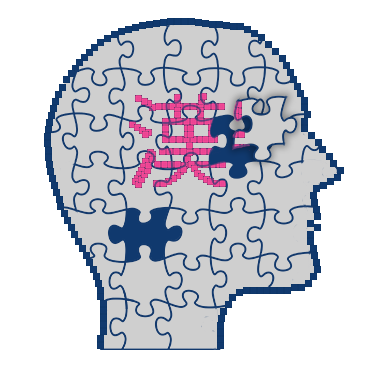
The Kanshudo Component Builder has been a key feature of Kanshudo since very early on in Kanshudo's history. Its core function is the ability to look up a kanji based on any combination of its components - the standard 'radical' used in traditional dictionaries, or any other component or combination of components. Since it is much easier to identify components than to find a kanji in a long list, this approach to looking up kanji is very efficient.
The original Component Builder introduced a key innovation which made the process even faster: the ability to identify a component just by typing its name. Once you know the names of standard components such as 'tree' (木) or 'sun' (日), you could simply type the name rather than searching for the component visually.
Today we are delighted to introduce another leap forward: the ability to look up any of the 400+ components used in Joyo kanji simply by drawing it. Just fire up the Component Builder, identify the components in your kanji, choose the easiest, and draw it in the drawing area! Drawing a component is much easier than drawing a complex kanji, and our system, which is built on a custom neural net designed by Kanshudo, will recognize any of the components used in Joyo kanji.
To get started, click here to open up the Component Builder in Quick Search.
For more details, read our detailed how-to guide to the Component Builder.
Posted: 2020-03-17,
Tags:
flashcards
favorites

As we write this, the whole world is struggling with the covid-19 pandemic. Cities (including our own San Francisco) and countries are locked down, and people everywhere are suffering from the virus itself or its after effects, including economic hardship. Our hearts go out to everyone particularly affected by this, and we wish everyone who reads this our very best as we all battle this common enemy. Stay safe!
We're writing this post to let you know about two small but valuable additions to Kanshudo: an item view for flashcards, and a list view for favorites. Read on to find out what these are and how useful they can be!
First, we've added a new view to complement the standard favorites view. In the (original) standard view, each of your favorites is presented in the same way it appears in Kanshudo search results, along with the ability to click each item and see more detail, view a kanji's components quickly and easily etc.
The new favorites list view provides a short form text summary of each of your favorites, and allows you to select each favorite with a checkbox. You can then selectively add your checked favorites to a flashcard set of your choosing, which gives you much finer-grained control.
The new item view for a flashcard set essentially gives you the opposite. Until now, the only view of your flashcards in any given set was a summary view which gave you your learning statistics and rough data. Now, we've added an item view for your set cards, which shows you each of the cards in standard Kanshudo format. To see the item view, visit your flashcards index and click VIEW for any set.
Note that any flashcards you have imported as plain text (ie, without using smart import) will not appear in the item view. If at all possible use smart import - Kanshudo flashcards are far more useful when you use them to study kanji / words / examples / grammar that the system recognizes, as Kanshudo uses that to measure your Japanese Mastery Level.

We're delighted to announce several improvements to the Drawing center.
Drawing kanji yourself is a great way to cement them in your mind, as it invokes multiple learning styles. For example, the physical act of moving your fingers to shape the strokes creates 'muscle memory'.
Plus, drawing kanji requires you to call to mind aspects of the character that you may not have focused on when you were trying to learn it visually. For example, you need to remember the correct stroke order, and you need to have a sense of what each stroke looks like individually.
Kanshudo's Drawing center is here to help! We've added several new features:
- Practice drawing the kanji in any of your flashcard sets. For any flashcard set that contains kanji, Kanshudo will automatically identify the kanji cards, and turn them into a list for you to draw.
- Practice drawing any of the components used in the Joyo kanji.
These great new features complement the original functionality:
- Practice drawing hiragana or katakana.
- Practice drawing the 50 most useful kanji components.
We're also working on a kanji drawing game and another exciting drawing-related feature. If you have any comments or suggestions, please let us know!

Flashcards are a great learning tool, and with the modern convenience of phones and computers, more accessible than ever. Kanshudo includes a powerful flashcard study and management system with built-in spaced repetition, and provides many ways to create flashcards - for example, lessons, collections and favorites.
But how do you use flashcards for kanji in particular? Read our new guide, Tips for using flashcards to learn kanji, which provides key tips for maximizing the effectiveness of flashcards for your kanji study.
Posted: 2020-01-04,
Tags:
pointsofinterest
names

Alert: as of the 1st January 2020, all Japanese names have changed!
More specifically, the English translations of Japanese names are now officially written in the same order as the Japanese, with the family name first. So, the official English translation of the name of Japan's prime minister at the time,
あべ
安倍
しんぞう
晋三
, is now Abe Shinzō . This is the opposite of the conventional order of Western names, so for many years the standard translation has followed the Western convention - Shinzō Abe.The primary motivation for this change is convenience for Japanese people - why should they be forced to say their names backwards when talking to non-Japanese? In practice, the key question will be how long it takes foreign media to adopt the new convention, since that is how most people develop a sense of the 'right' way to say a Japanese name.
This blog post is based on the Japanese name reversal point of interest. For more points of interest, see the point of interest library.

Celebrate the end of 2019 by locking in a year of the best online Japanese learning platform available: one year of Kanshudo Pro access for $15.
2020 will be a fantastic year to learn Japanese: Japan will host the Olympics, which will put it on the world's center stage. 2020 is the first full year of the new Reiwa era, following the ascension of Emperor Naruhito in May. And Japanese continues to be one of the world's most interesting languages, offering unparalleled access to one of the world's most unique cultures.
Whether you are looking for a new career opportunity, a fascinating travel experience, or simply to enrich your life, learning Japanese is one of the best investments in yourself you can make.
Become a Kanshudo Pro today and get 12 months of Pro access to the world's most sophisticated online Japanese learning platform Sign me up!
Kanshudo brings an extraordinary range of benefits to supercharge your Japanese studies:
- Our Japanese teaching AI tracks your progress and provides you with a comprehensive personalized study program.
- We cover kana, kanji, vocabulary and grammar through several lesson series covering different levels.
- We have one of the most comprehensive grammar libraries available online.
- We have a reading library, free flashcards, learning games, quizzes and challenges.
- Our dictionaries are the most extensive available, and are all cross-linked.
- And our unique visualizations, including our mastery wheels and mastery map, will help you understand your progress and drill down on precisely what you know and don't know.
Take the most important step towards mastering the Japanese language: become a Kanshudo Pro! Sign me up!
And here's one more great reason to become a Kanshudo Pro now. Kanshudo pricing has not changed since we were founded nearly five years ago - and in that time the features and content in the system have multiplied tenfold. In early 2020, we will be putting our prices up for new subscribers.
However: existing Kanshudo Pros will continue on current rates! So now is the best possible time to lock in the unbelievable value that Kanshudo Pro brings for anyone serious about learning the Japanese language!
Give me unbeatable value: $15 for a year of Pro access Sign me up!
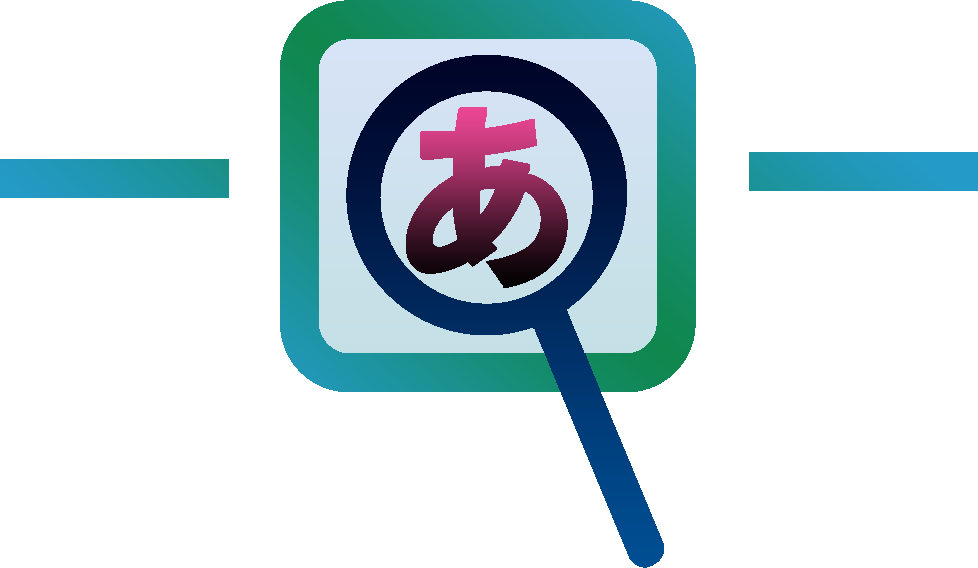
We're thrilled to announce our very first grammar game! As requested by many of you for a long time, Grammar Match makes it possible to learn grammatical constructions directly in the context of example sentences. Grammar Match uses a fun and intuitive game format, similar to our Sentence Complete game, as well as to one of the most common exercise types on the JLPT: choose the correct construction from several similar ones to fit the blank(s) in a sentence.
Kanshudo's huge grammar reference library
The Kanshudo reference library of Japanese grammar now contains nearly 750 articles, which between them include nearly 50,000 words! It is fast becoming one of the most comprehensive resources on the Japanese language available. You can search and bookmark articles, and even study them as flashcards. Our unique Grammar Mastery Wheel helps you visualize your knowledge.
However, until today, the grammar library has been largely 'read only'. There was no way to directly test your knowledge of Japanese grammar in a fun and engaging way.
Introducing Grammar Match
Now there is!
Use Grammar Match to test yourself on what you already know, to identify new constructions at your current study level, as well as to reinforce your knowledge. Grammar Match currently covers around 80 core grammar points - the most important 10-15 for each JLPT level - and we are adding more daily.
Play Grammar Match with over 100,000 example sentences!
One of the best things about Grammar Match is that it draws on a huge array of available material. Gone are the days when you could only quiz yourself on a couple of examples of a construction. To create Grammar Match, we have indexed our entire collection of nearly 160,000 example sentences for grammatical constructions, so as you play Grammar Match, you can work with sentences of almost any difficulty level, and an almost inexhaustible supply of fresh material. The grammar points included so far draw on nearly 115,000 sentences, and that number is also increasing as we include more grammar points.
Earn points and Pro access
And of course you benefit from all the usual Kanshudo features: as you play, you earn study points, which in turn give you coupons for Pro access. Playing Grammar Match will help you increase your Japanese Mastery Level and your Grammar Mastery Score.
Play now!
Click here to play Grammar Match now. You can also find Grammar Match any time from the main PLAY menu in the top right of every page.
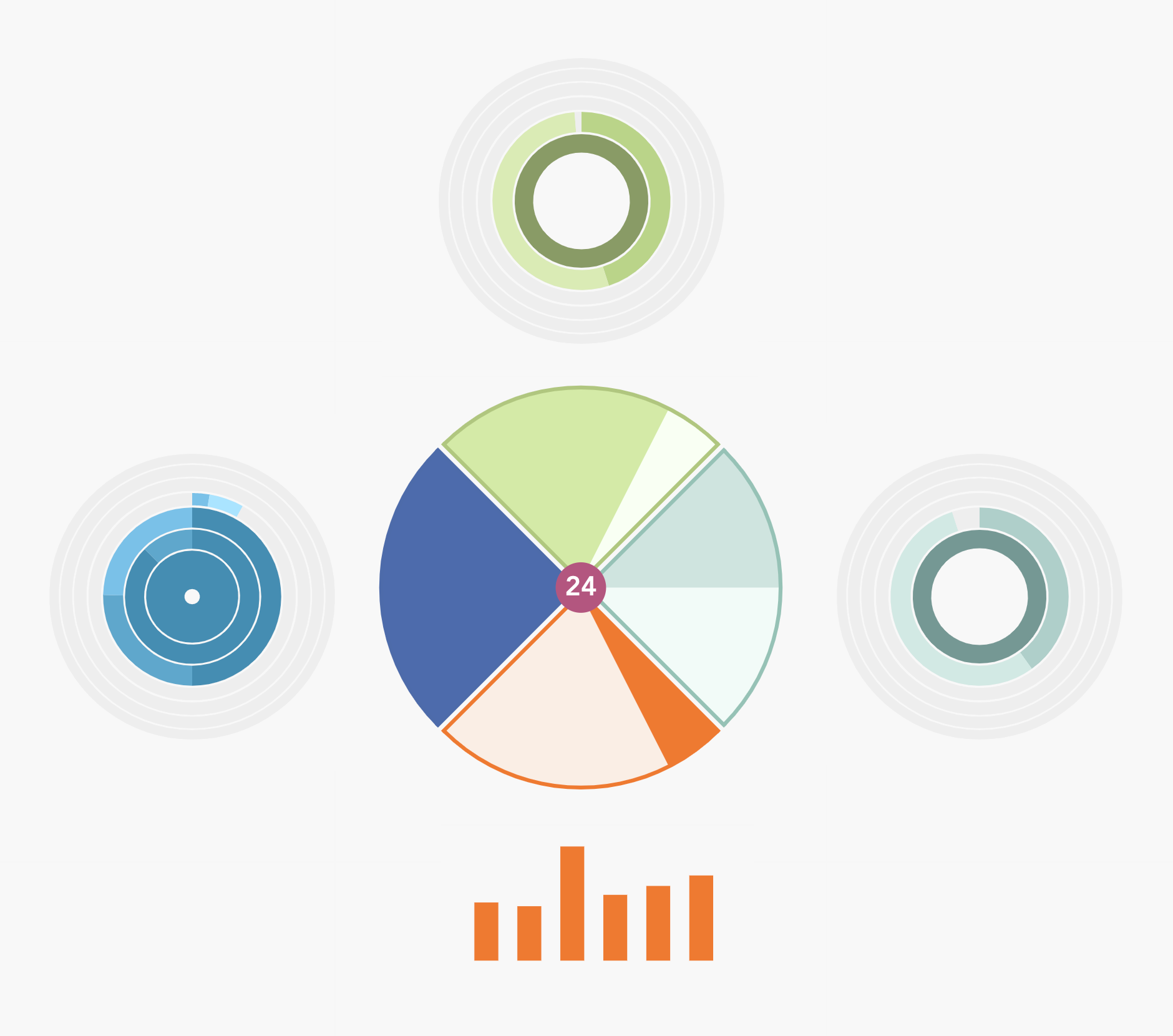
In this post we're going to dive a little deeper into the relationship between your kanji mastery score and your Japanese mastery level. Long-time users of Kanshudo will be very familiar with the kanji wheel and kanji mastery score - how exactly do they tie up with our new comprehensive Japanese mastery level?
Your kanji wheel and kanji mastery score

The kanji wheel is a visual summary of your progress with all kanji. We divide kanji (and kana) into sets, and visually represent those as rings in a wheel - the hub of the wheel represents kana, and the most frequently occurring and useful kanji are nearer the center.
We shade the rings in the wheel based on our assessment of your knowledge of each kanji individually. We rate your mastery of a specific kanji from 0 (no knowledge) to 4 (fully mastered). Each ring of the wheel shows you how many kanji you have with each score.
Your kanji mastery score then sums up your knowledge of all these kanji by assigning weights to each ring - rings nearer the center are given more weight, because the kanji are more important. A score of 95 means you have fully mastered all 2136 Joyo kanji. (To get to 100, you also need to know kanji outside the Joyo, such as the Jinmeiyo.)
Your Japanese mastery level

Your Japanese mastery level is a number from 1 to 70 which represents your overall Japanese progress - not just kanji, but also vocabulary, grammar, and general experience.
In your [dashboard](/dashboard), the graphic at the top represents your progress through your current mastery level. The number in the center is your level - here, 24. Each 'wedge' is shaded to show your progress through that element.
So in this example, the wedge on the left (kanji) is fully shaded - it shows you have completed the kanji requirement for mastery level 24. The top wedge (vocabulary), is about 80% shaded; the right wedge (grammar) is about half shaded; the lower wedge (experience) is about 20% shaded.
So how do my kanji / word / grammar mastery scores relate to my Japanese mastery level?

Each set of ten mastery levels corresponds to one ring in each wheel. So for example, mastery levels 10 to 19 (each of which starts with a '1') corresponds to ring 1 - the first actual ring in each wheel. (In the kanji wheel, the central circle is for kana.)
Mastery levels 20-29 correspond to kanji / words / grammar with usefulness level 2. If your mastery level is 24, you are working on the second ring in each wheel.
The rings show you how many items you need to study, and what your mastery score is for each item. From those numbers we calculate an average - your 'average mastery' for the ring. We require you to reach average mastery of 3 (out of 4) to progress from one ring to the next. In other words, to complete one set of ten mastery levels, we require you to get your average mastery for the kanji / words / grammar in that set to 3.
So to progress from one mastery level to the next, you need to accomplish 10% of that - you need to increase your mastery of kanji / words / grammar by 0.3.
We require you to make progress in all dimensions in parallel. Even if you increase your kanji mastery by more than 0.3, you won't progress to the next mastery level until you also increase your grammar and vocab mastery by 0.3, and accumulate a certain number of study points.
Posted: 2019-11-06,
Tags:
mastery

We are delighted to formally take the wraps off our comprehensive new approach to learning Japanese, the most exciting update and significant update in Kanshudo's history.
Our new approach brings five significant improvements:
Your Japanese Mastery Level
Your Japanese Mastery Level is a single number from 1 to 70 which represents your progress with Japanese. Kanshudo now tracks your knowledge of kanji and kana, grammar, and vocabulary separately, and presents you with an overall progress assessment as well as your progress in each area individually. Read more about Japanese Mastery Levels.
Dashboard
Your Dashboard is a new central location accessible from anywhere on Kanshudo with a single click, showing your Japanese Mastery Level, your current study session, and other key status information. Visit your Dashboard.
AI Study Recommendations and Study Sessions
Our new AI examines your study history and Japanese Mastery Level, and develops custom study sessions just for you. Study sessions can be as long or short as you like, and you can take them as often as you wish. Each session consists of one or more study tasks which are customized to focus on the knowledge most useful for you to acquire next, as well as on making your study time as effective and fun as possible. View study recommendations on your Dashboard.
Your Japanese Mastery Map
Your Mastery Map is a visual indicator of your progress through the 70 mastery levels, represented as a physical journey through Japan's islands, culture and history. The Mastery Map helps bring your Japanese to life, as well as giving you practical and useful knowledge of life in Japan. Visit your Mastery Map.
New Navigation
We've completely redesigned our navigation system, putting key study tasks in the top menu, and a comprehensive list of key system functions in a new bottom menu. You can access your Dashboard and Study Session from the top of any page, and you can take advantage of a sophisticated new search switcher which will help you find anything on Kanshudo quickly.

As part of our transition to the new Japanese Mastery system, which tracks your progress with grammar and vocabulary as well as kanji in your Dashboard, we're introducing a 'usefulness' rating consistent with the usefulness rating already used for vocabulary and grammar points. This replaces the old 'ring' designation of kanji.
Kanji usefulness levels start with 'K' for kana, and then go from 1 - 8. Usefulness levels 1 - 5 represent the Jōyō kanji, and map directly to the former rings 2 - 6. In other words:
- kana used to be 'ring 1', but are now 'usefulness K'
- the most common kanji used to be 'ring 2', but are now 'usefulness 1'
- etc.
What used to be ring 7 contained 'everything outside the Jōyō'. With the new system this is now more clearly broken out into separate usefulness levels:
- Jinmeiyō are usefulness 6
- any kanji with a government frequency rating or used as a component in any Jōyō kanji are 7
- all remaining Hyōgaiji are usefulness 8
This new system makes it much easier to see the study requirements for your Japanese Mastery Level. For example, if you are studying mastery levels 10-19, you can see at a glance from the first digit (the 1) that you should be focusing on kanji with usefulness 1, grammar points with usefulness 1, and vocabulary with usefulness 1.
You can find kanji by usefulness level with the special ufn: search keyword. So for example, to find all kana, you would run a kanji search for ufn:K. To find all kanji with usefulness level 3 (formerly ring 4), you would run a kanji search for ufn:3.
You can combine the ufn: keyword with the mymastery: keyword to find kanji with a specific usefulness that you have mastered to a specific level. For example, ufn:1 mymastery:4 will show you all kanji with usefulness 1 that you have fully mastered.
Your kanji mastery wheel looks just the same, and still has the name number of actual rings - all that's changed is how we describe them!
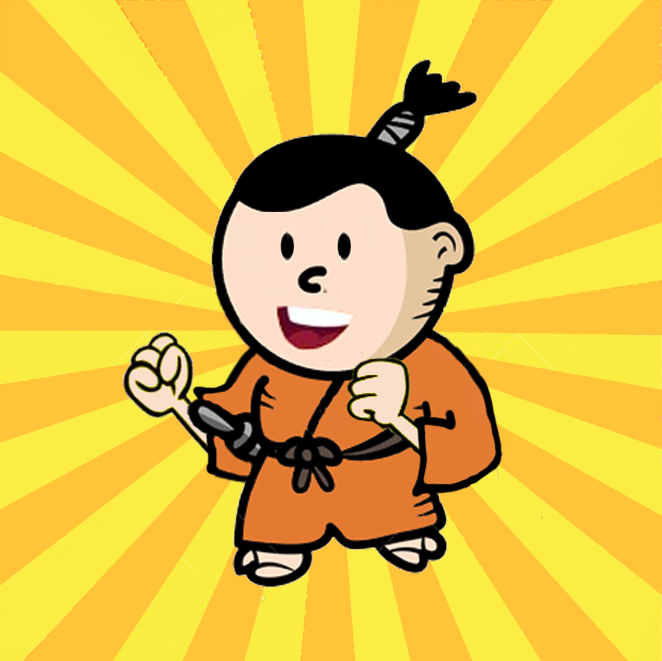
It's been a few months since we've posted an update, because we've been hard at work on some very exciting improvements to Kanshudo. We're delighted to announce that beta testing is coming to a close, and over the next few weeks, we're going to start rolling out the new features and updates. Here's a quick preview! You can try any of these features today by joining the beta program - details below.
- Our biggest update is what we're calling Japanese Mastery Level. This new measure tracks your Japanese knowledge across several dimensions in parallel - kanji, vocabulary, grammar, and overall experience. This is a big step forward from the kanji mastery score, and comes with some great new visualizations such as the Mastery Map (a visualization of your progress as a literal journey around Japan), as well as word and grammar mastery wheels (building on the kanji wheel you know and love!).
- New navigation: we've redesigned the navigation to provide quick access to key functions (at the top) and more comprehensive access (at the bottom) on every page.
- The Dashboard: your new 'home page' on Kanshudo. Once you move to the new navigation system, the Dashboard will be accessible from any page on Kanshudo, and will summarize your mastery progress, your lesson status and other key data.
- Our new AI study recommendations! We are delighted to announce big improvements to our AI - the system that tracks your Japanese progress and provides recommendations for what you do next. The new AI tracks more dimensions of your progress, and offers broader recommendations based on what's available on Kanshudo. It now takes into account how long learning tasks might take you. Plus, study recommendations are now presented in the form of study sessions, which include a set of tasks with a defined time limit, so you can easily manage your study time.
- We're very pleased to introduce Boost, an entirely new study mode on Kanshudo, which is very effective for learning, but has all the fun of our games - because it builds on them! Rather like our Kanji Challenges, Boost presents you with a series of games and exercises for the material you're working on. However, Boost works with any material - words, grammar points, kanji, collections etc.
- Grammar Match is our first grammar-focused game. For those of you studying for the JLPT, this will be extremely helpful, as it will let you really drill into how grammar is used in real sentences. Unlike other Japanese grammar sites out there, Grammar Match comes with a huge array of material - we've built a rules engine to let grammar points draw on our full database of 160,000 example sentences.
- Our Travel Collection is a set of useful words and phrases designed for your first trip to Japan. The Travel Collection comes complete with a range of study methods, including flashcards, our new Boost, and more.
- Quick Test is a great new study mode which lets you quickly work through any collection of material and identify what you know and don't know for focused study.
If you would like to help beta test any of these features, please drop us a line via our support page.
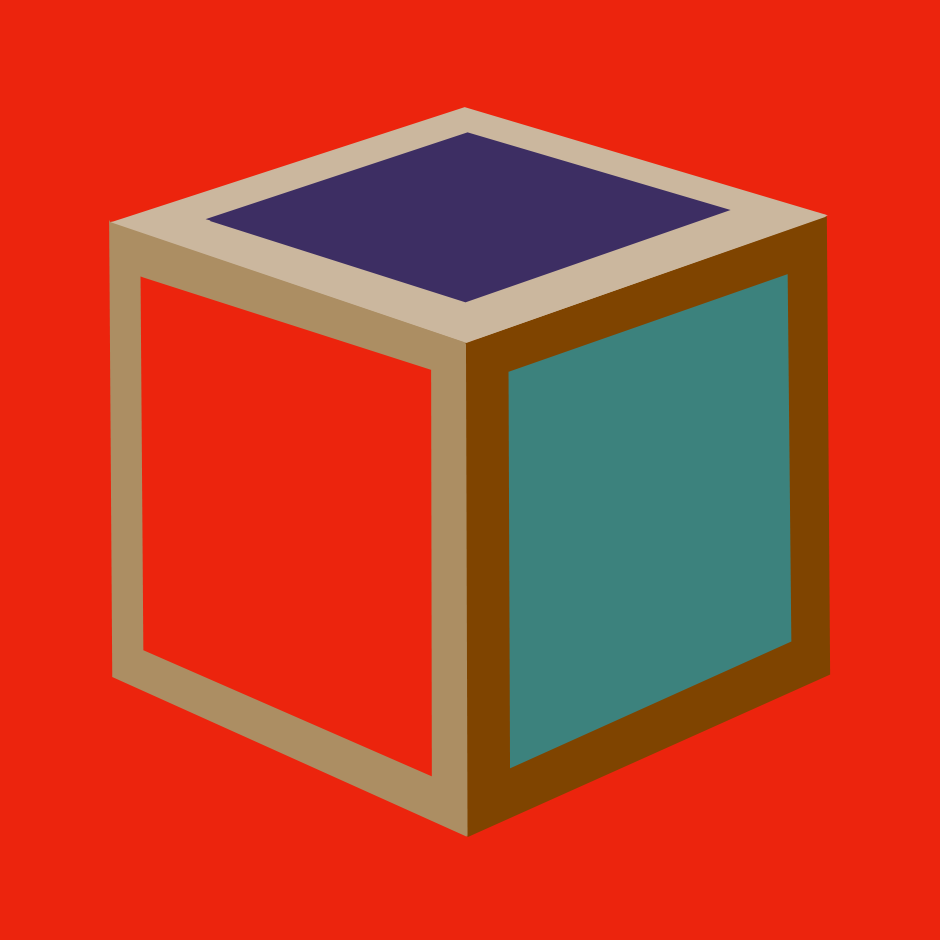
Kanshudo's Textbook Companion enables you to use all the features of Kanshudo with your favorite textbook. Similar to our own lessons, you can review the words and kanji introduced in each lesson of your textbook, practice drawing the kanji, play kanji and word games, and automatically generate flashcards. Kanshudo tracks your progress, updates your Kanji Wheel, and gives you study points!
Today we've introduced a new companion for the Basic Kanji Book series by Bonjinsha. The Basic Kanji Book series focuses on kanji, covering around 250 per volume.
In addition, the Kanshudo Textbook Companion supports the latest editions of several other popular textbook series: Genki, Minna no Nihongo, Japanese for Busy People and Adventures in Japanese.
Get started with the Kanshudo Textbook Companion today!
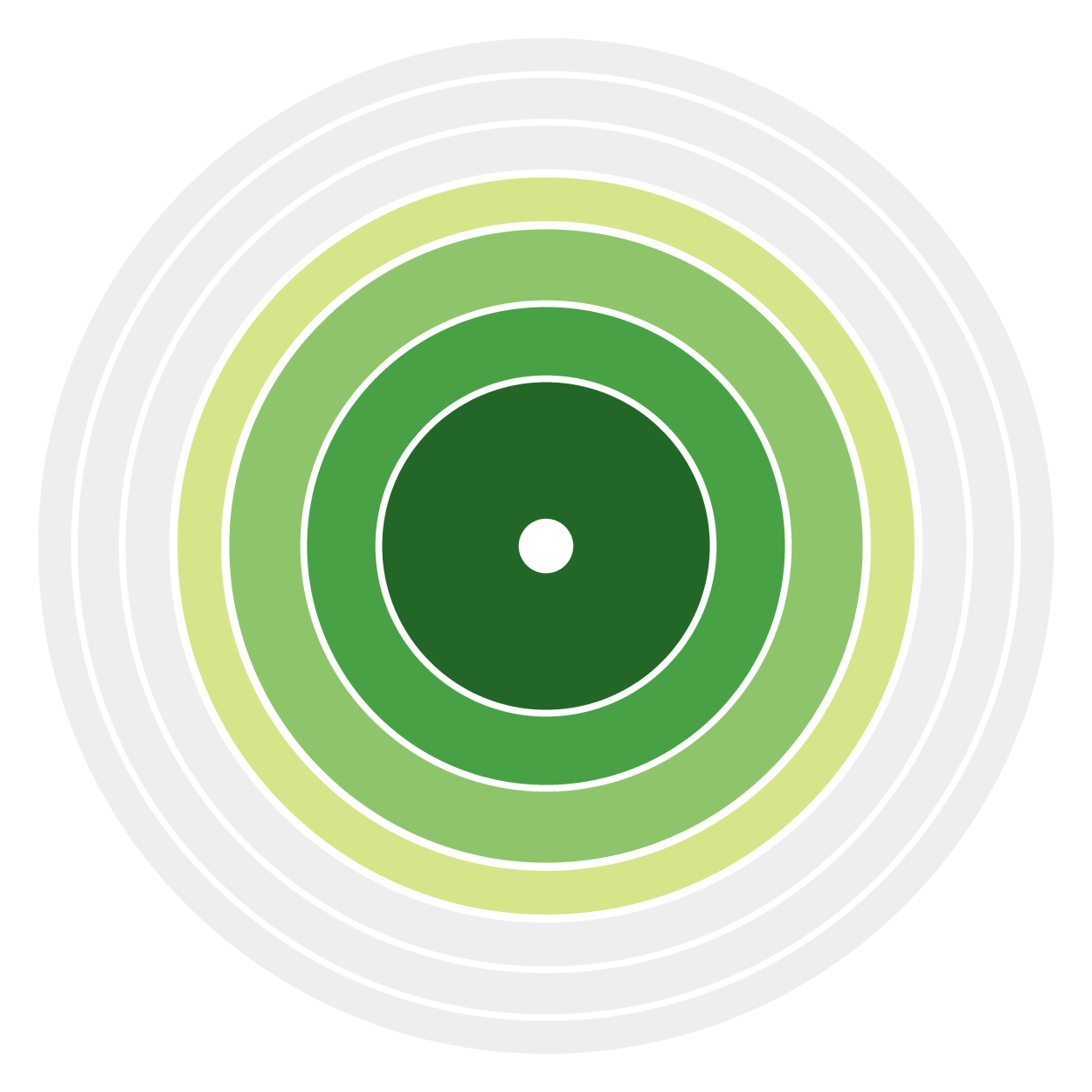
Kanshudo's Kanji Wheel is a unique way to visualize your knowledge of kanji. You can instantly see how well you know kanji of all levels of difficulty, and pinpoint what to study next. The Kanji Wheel is a visual representation of your 'kanji mastery', which is also presented as a single score to help you track your progress.
If you're new to Kanshudo's Kanji Wheel and your Kanji Mastery score, check out our detailed guide, or just visit your own personalized wheel to see it for yourself. You can reach your Kanji Wheel by clicking the icon wherever you see it in Kanshudo.
We're delighted to announce several improvements which make the Kanji Wheel even more useful:
- Overall summary data
- Simplified scoring mechanism
- Detailed explanation of your current score
- Graphical illustration of your progress over time
Overall summary data
Many people have asked for a summary of their overall progress - how many kanji have I fully mastered? How many do I have left to study? We've made this very easy: now, when you visit the Kanji Wheel, you will see an OVERALL PROGRESS panel which shows you exactly where you stand.
Simplified scoring mechanism
We've simplified the way your kanji mastery score is calculated to make it more transparent and easy to understand. Previously we used a 'weighted average' score - different mastery levels would contribute different amounts to your average mastery score for a ring. Now we've made that a simple average - your average mastery is what you would expect: the total of each kanji in the ring multiplied by your mastery of that kanji, divided by the number of kanji in the ring.
For a few users, this means that your score went down a few points. However, we've updated all your historical scores to use the new formula, and since you can now track your score over time visually, you can see your relative progress over time much more easily than you could previously.
Detailed explanation of your current score
To help see what you need to do to improve your score and why it changes the way it does, we now provide a summary of exactly how it is calculated. In the OVERALL PROGRESS panel, click CALCULATION DETAILS.
Graphical illustration of your progress over time
How fast is your kanji knowledge progressing? How long will it be before you have fully mastered the kanji? To help you understand this, we've added a graph showing your progress over time. You can see the most recent year's progress directly from your Kanji Wheel - in the OVERALL PROGRESS panel, click SCORE HISTORY. You can also see a summary of your progress since you began using Kanshudo - you'll find a link in the quick view, or you can reach the full view from your account index. Here's a direct link.
We hope you enjoy these great new features, which are intended to help your kanji studies progress faster and more enjoyably! If you have any feedback please let us know.

We've made some big improvements to the Reading Corner, Kanshudo's Japanese/English bilingual reading library.
- We've doubled the number of readings to choose from
- Readings cover all levels - we have pieces for absolute beginners, beginners, intermediate and advanced!
- By popular request, we've added some non-fiction pieces, including news extracts
- We have several pieces by some of Japan's most famous authors
- The index page has a fresh new look, and you can now filter readings by difficulty level, genre, and your own reading progress
- You can now create flashcards from the kanji and word lists for each reading
- You can take a 'Quick Test' for the kanji & words to find out what you already know, and create flashcards only for what you don't
Visit the Reading Corner now to get started!
As always, through our partnership with Satori Reader, you have access to over 450 additional readings, and you can sync your Kanshudo progress.

Valentine's Day is a big event in Japan, but the customs are somewhat different to what you might be accustomed to. To help you prepare for a Japanese Valentine's Day, we've added a delightful new bilingual reading to our Reading Corner:
As well as Valentine's Day customs and vocabulary, this piece introduces you to the core Japanese grammatical concept of giving and receiving, covered in depth in our grammar point, あげる, くれる, もらう - giving and receiving.
The Kanshudo Reading Corner is the perfect way to practice your Japanese. It contains short bilingual texts of various levels and styles, designed to introduce you to useful words and grammar in real world contexts. Try to read each sentence in Japanese first, but then check the detailed annotations and grammatical notes to build your knowledge.
To find out more about Valentine's Day in Japan, you can also read our in-depth article, Valentine's Day in Japan.
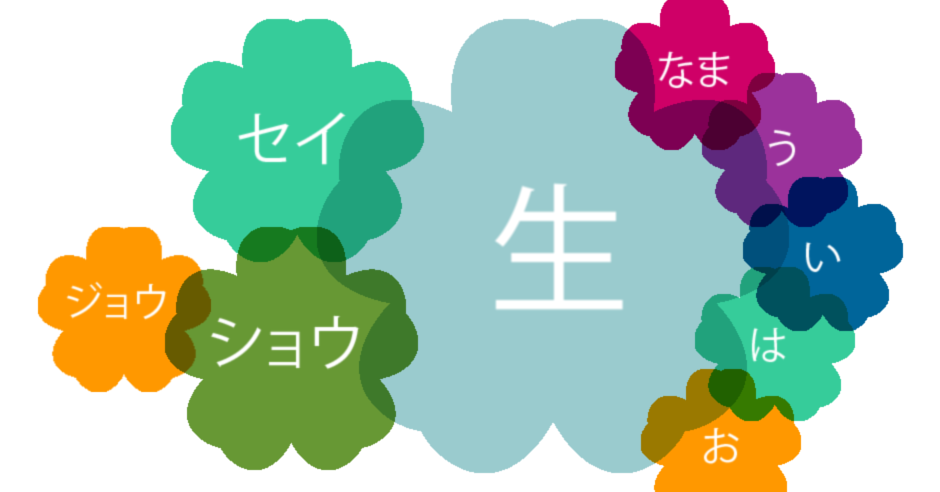
Ever since we started Kanshudo a few years ago, one of the most consistently requested features has been for help answering questions like this:
- Which kanji readings should I learn?
- Which kanji readings are actually important?
- When a kanji has several readings, how do I know which one to use?
We're delighted to let you know Kanshudo now has the answers! Today we're announcing three major new features: together, they will give you all you need to know to understand how to read kanji.
####A comprehensive step by step 'how to' guide: 'Kanshudo's guide to reading Japanese kanji'
Our new guide is a practical step-by-step introduction to kanji readings, with many examples, and simple rules of thumb for determining how to read any word you encounter.
####Detailed data for each Jōyō kanji on how important each reading is
We have analyzed every common word for every Jōyō kanji, and created a comprehensive assessment of how useful each reading of each kanji is.
Now, whenever you click on a kanji to get the 'quick view', you will see a summary of usage of each reading.
Plus, you can click through to the kanji's details page, where you'll see a summary of all readings used in all words in Japanese!
To check this out, run a search for a kanji. In the search results, click the blue box to get the quick details, and you'll see the usage summary. For example, try: 本
####Ability to search for words that use a specific reading of a kanji
You can now search for all words that use a specific reading of a kanji. Our new search syntax even lets you search for different variations of the same reading separately.
To use this function, enter a search of the form kanji:reading. For example, try this search for all words that use 本 with reading ほん: 本:ほん
Together, these new tools let you quickly find the most useful words for any reading, so you can get a sense of how important that reading is, and determine how important it is for you to learn.

This has been another big year for Kanshudo, with several major new features and many improvements to the system. To celebrate, we are offering 50% off a one year Pro subscription for a limited time only. Make 2019 the year you master Japanese!
Here are just a few of the improvements we've made this year:
- Kanshudo Challenge - the most sophisticated way to learn kanji and associated words
- Inflections and Conjugations - our sophisticated new inflections system analyzes the complex inflections in our sentence reference library, and provides instant conjugation of any word in the dictionary
- Word Quiz - a great new way to build your vocabulary
- Reading Corner - a whole new section of the system focused on helping you practice reading, currently with 12 texts, and with 12 more on the way
- Integration with Satori Reader - customize your Satori Reader experience based on your Kanshudo knowledge
- Drawing Center - practice drawing hiragana, katakana, and the most common kanji components
- Site Search - find anything on Kanshudo quickly and easily
- Grammar Library - now up to nearly 500 articles, comprehensively covering JLPT N5-N3, and steadily covering more of N2 and N1
Kanshudo is still only 5c per day at the sale price of $15 for a full year. Kanshudo is unbeatable value given the huge wealth of knowledge and tools Kanshudo puts at your disposal. Here are just a few of the things Pro membership includes:
- Kanji Mastery - a sophisticated way to track and visualize your entire knowledge of kanji
- Lessons - suitable for absolute beginners and intermediate learners
- Games and quizzes - Kanshudo Challenge, Word Quiz, Kanji Quiz, Kanji Builder and much more
- Mnemonics - over 3500 kanji mnemonics
- Unlimited flashcards - our flashcard system is the most advanced Japanese flashcard system available, and completely integrated with the whole system: create flashcards for any item with a click, and refer back from a flashcard to the item
- Dictionaries - reference dictionaries of words, names, kanji, and example sentences
- Grammar library - an integrated grammar reference library
Act now - we don't do sales too often, and this is the last opportunity to get Kanshudo at this unbelievable price.
Give the gift of Kanshudo! If you know someone who could benefit from Kanshudo, we are now offering gift certificates for one year of Kanshudo Pro access at the sale price of $15. Please contact us for details.
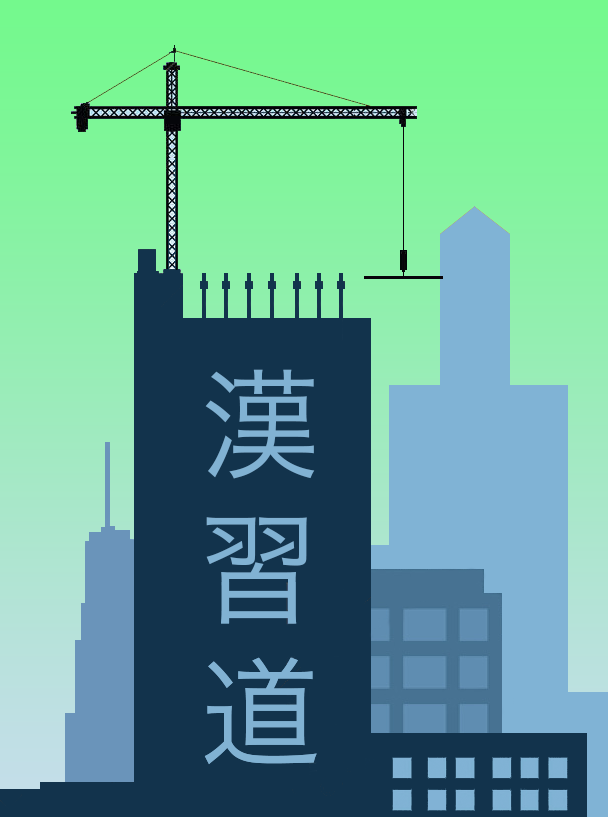
The Kanshudo Japanese Grammar Library now contains nearly 500 articles, with comprehensive coverage of JLPT levels N5, N4 and N3, and growing coverage of N2 and N1. It's one of the best reference guides to Japanese available, and best of all, it's free to access!
Plus, we're excited to announce that your knowledge of each grammar point is now tracked by the Kanshudo system with a 'mastery score' in the same way as your kanji knowledge. You can view your mastery of all Japanese grammar at a glance from your personal grammar mastery summary.
Additionally a new 'usefulness' rating shows you how important every grammar point in the system is for you to learn, and lets you focus your efforts on your current knowledge level.
We've also expanded our grammar flashcards system: you can now create flashcards with one click for all grammar points in a JLPT or usefulness level. You can also create a new flashcard or jump straight to an existing one directly from a grammar point.
Our sophisticated inflections and conjugations analyzer links back to the grammar library, so when you study an example sentence, you can quickly read more about any of the inflections and conjugations it uses.
Find any of these pages and features quickly using Kanshudo Site Search:
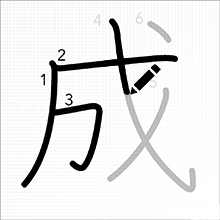
Introducing the Drawing Practice Center: a new system which lets you practice drawing hiragana, katakana, and the most common kanji components quickly and easily.
Writing kana and kanji yourself is without a doubt one of the most effective ways to learn. Our system lets you work steadily through the three most important areas - hiragana (for writing grammar), katakana (for loan words), and components (from which all kanji are made up). You can show or hide each character as a reference, and view an animation to see the correct sequence. As you draw, your strokes 'snap' to their correct locations, and incorrect strokes are highlighted.
Best of all, the Drawing Practice Center is completely free! Visit the Drawing Practice Center to get started.
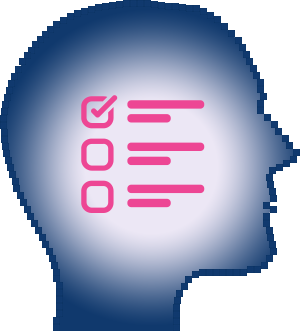
We are very excited to announce a brand new way to build and test your Japanese vocabulary: Kanshudo Word Quiz.
- In high score mode, graded questions start easy and get progressively more difficult (more complex words, more similar alternative answers) to test your current knowledge.
- In vocab builder mode, choose a difficulty level to focus on, and build your vocabulary.
- On completion each quiz shows you all questions and answers for easy review, and one click study.
- Works well on mobile as well as larger screens so you can study on the go!
- Your quiz scores are used to customize your Kanshudo experience and help us understand how to help you learn Japanese more effectively.
- Your past quizzes are also available for you to review and track your progress.
Take a word quiz now and build your Japanese vocabulary!

We've made some more great improvements to the flashcard system recently. Here's a quick summary:
- Snooze a set: you can now 'snooze' an entire set. Once snoozed, the set's totals won't appear in your overall summary or statistics. Sometimes a set just gets away from you, and now you don't have to get bogged down with material that's not core to your focus.
- Sort sets and cards: you can now change the order of cards within a set, and the order of all your sets.
- Move cards: move one or more cards to another of your flashcard sets.
- Delete multiple cards: you can now select multiple cards for deletion at the same time.
- Examples: you can already create flashcards for example sentences by tagging them as favorites (in the same way as kanji, words and grammar points). You can now create flashcards for all examples used in beginner lessons automatically!
Our goal is to provide the most effective Japanese language flashcard experience available, and we hope you like these improvements. If you have any comments or suggestions, please let us know.
Kanshudo flashcards are free to use - just log in (or register) and get started! Create flashcards automatically from beginner lessons, intermediate lessons, or kanji / word collections. Import your own kanji or word lists. Visit your flashcard home page to view your sets and statistics. Read the how to guide for many more options and features.
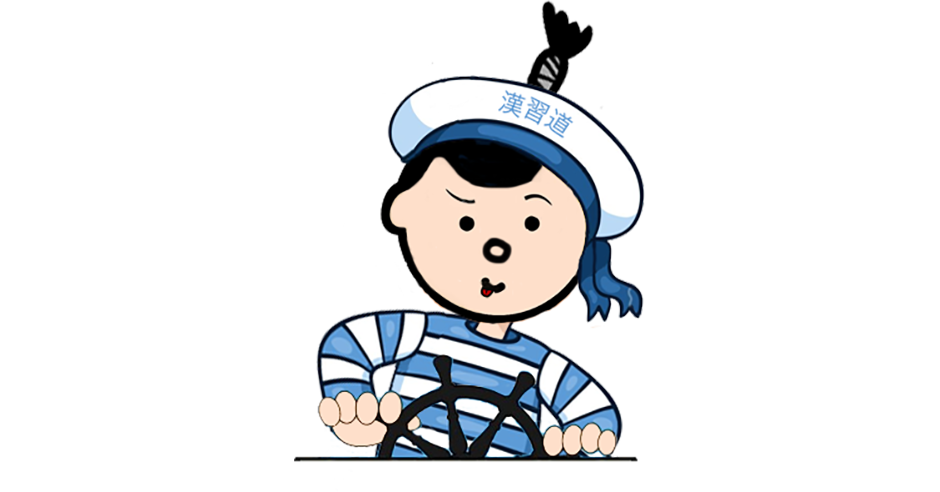
Read our new point of interest article on the forthcoming 海の日, one of Japan's 16 annual public holidays!
As with all our feature articles, you can see vocabulary and kanji listed so you can quickly and easily tag any you need as favorites to study.

Inflections - modified forms of verbs and adjectives - are one of the most complex parts of Japanese. Verbs alone have several basic conjugations, and many more complex forms, each of which can often be 'stacked' on top of each other. Understanding how a word is composed of these forms is one of the great challenges in learning Japanese.
Now Kanshudo has introduced several tools that make this much easier! You can now see inflected forms of any word with one click directly from search results. You can also now see what forms are used to make the inflected words in our over 150,000 example sentences, with links directly to the Grammar Library.
For more details on using these new features, see our new 'how to' guide, Understanding inflections and conjugations.
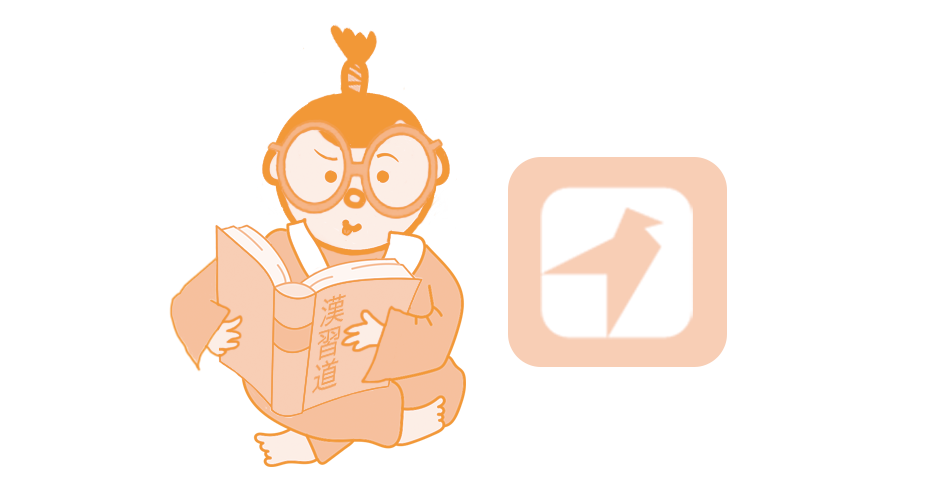
We are delighted to announce some exciting new developments designed to help you with a critical aspect of learning Japanese: reading.
Our new Reading Corner showcases short extracts you can work through on Kanshudo, in a variety of genres. Clicking on each sentence in the extract provides you with the familiar Kanshudo view of words and kanji, as well as links to grammar points. Each extract also includes a short introduction, and a words and kanji section where you can study the material introduced in one place.
To really supercharge your reading practice, we’ve partnered with Satori Reader ⇗, the leading system for Japanese reading practice. Satori Reader has a sophisticated user interface focused on helping you to read effectively, which customizes the way each sentence is presented based on what you already know. The system includes over 300 articles, many of which are in series, so you can get to know the characters and themes, and reuse the vocabulary introduced.
We’ve set things up so your kanji knowledge on Kanshudo is automatically synchronized with Satori Reader! Best of all, Satori Reader has provided a coupon which will give you 20% off your first three months (save $5.40) or 15% off a full year (save $13.35)! For more information, see our how to guide for instructions.

To celebrate the launch of our exciting new Challenge feature, we are holding a 'nearly new year' sale: 50% off Pro membership for an entire year! Only $15 - less than 5 cents per day - gives you full access to the most sophisticated Japanese learning system available. Make a commitment to improve your Japanese today! Kanshudo Pro is incredible value at full price: this sale price offers unbeatable value.
Take advantage of this fantastic offer now: Give me 50% off Kanshudo Pro!
The big news around Kanshudo is our new Challenge feature, which we have been working on quietly for many months. Challenges are an extremely effective way to master kanji and words, based on several years of research into the most effective way to teach Japanese. Each Challenge consists of a series of games and exercises built around a kanji, its most useful words, and examples that use the words in context. We are confident that Kanshudo Challenge is the most effective system available for students of Japanese at all levels.
Take the Kanshudo Challenge now! Challenge
We have introduced a lot of new features and changes on Kanshudo over the past year. To help you get caught up, here's a quick overview:
- Challenge (of course) - the most sophisticated way to learn kanji and associated words
- Kanshudo for study groups - if you are a teacher or study with others, Kanshudo has discounts and other benefits for you (contact us for details)
- Many improvements to flashcards, including visual statistics, flashcards from example sentences and grammar points
- A whole new Kanji Draw system to help you practice drawing kanji - now with options to 'snap' correct strokes and eliminate incorrect strokes - try drawing 本 to see it in action
- Grammar library - a growing reference library of Japanese grammar
- Kanji Builder - our most popular game
- Sentence Complete - our second most popular game
- Sentence analyze / translate - analyze whole Japanese sentences (and get English translations) or word lists in one go!
- Vocab usefulness - a comprehensive ranking of every word in Japanese so you can prioritize your studies
- Integration with Kanji Map and Joy o' Kanji
- Lots more ...
Act now! Our sale is only available for a limited time, and as you know, we don't do sales or promotions too often.
Sign me up! Give me 50% off!
Kanshudo is your AI Japanese tutor, and your constant companion on the road to mastery of the Japanese language.
To get started learning Japanese, just follow the study recommendations on your Dashboard.
You can use Quick search (accessible using the icon at the top of every page) to look up any Japanese word, kanji or grammar point, as well as to find anything on Kanshudo quickly.
For an overview, take the tour.
